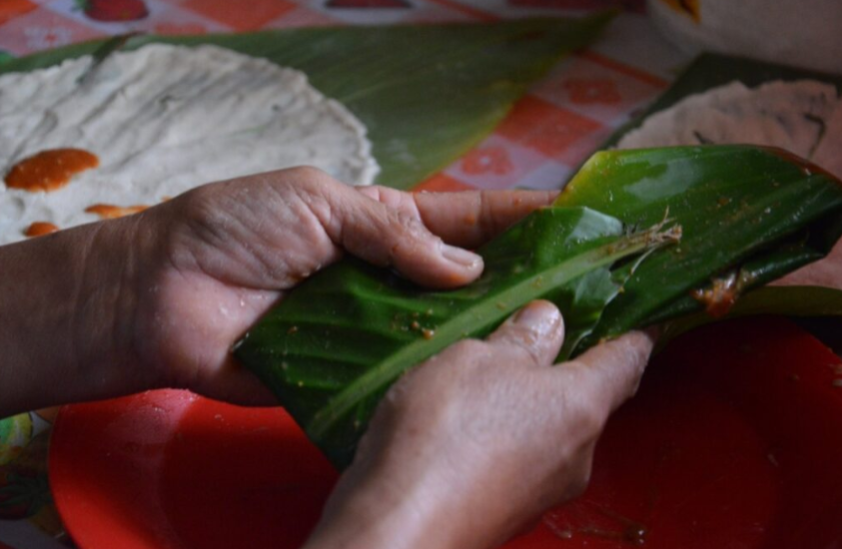
by Silvia Ribeiro*
Seven and seven. May 2021. In the inverse voyage to that of the conquistadors, the ship La Montaña launched from Isla Mujeres carrying seven delegates from Zapatista communities to Europe, in the Journey for Life. After 47 days of sailing, it arrived in the Azores of Portugal the very same day that the G-7 was to meet in England. The seven Zapatistas are going to meet with collectives, organizations, and movements to share the struggles, pain, joy, rage, and learning from below. There is a great deal of enthusiasm, expectation and months of collective organization to receive and share with the Zapatista delegation, which will be joined by delegates from the National Indigenous Congress. They were invited to meet in lands and territories of 30 European countries.
Without anyone inviting them, the seven governments of the G-7 announced from the sterile concrete how they will continue the war against people and the planet, in a discussion disguised as green and charitable. (Keys to understanding the messages of the G-7, https://tinyurl.com/te33bfbp).
Thirteen and thirteen. May of 2021. A team from the portal Desinformémonos, coordinated by Yasnaya Aguilar Gil and Gloria Muñoz Ramírez launched an artistic, visual, written, and auditory journey Tzam Trece Semillas, a navigation in parallel with the Journey for Life (https://tzamtrecesemillas.org/).

In 13 months, they will present the thirteen demands from the indigenous peoples that the EZLN announced since its public emergence in 1994; work, land, shelter, food, health, education, independence, liberty, democracy, justice and peace, to which they would later add the rights of women and the right to information.
Tzam, which is to dialogue in Ayapaneco, is the heart of this project, they tell us. They will share from month to month, glimpses from distinct indigenous peoples, nations, tribes and neighborhoods with each one of the 13 Zapatista demands/seeds. Thirteen seeds, 13 months, 130 collaborators from May 2021 to May 2022.
They began with reflections about work, in stories, poems, images, and songs of 10 indigenous women from the O’dam, Ayuujk, Mazateco, Zapoteco, Nahua, Tsotxil, Mazahua, and Totonaco peoples. Each one leaves us thinking, not one leaves us indifferent. From images that are alive and that apprehend us with their beauty and expression, to stories that move us heart to mind. In brief texts and poems, they manage to transmit the history and present of Mexico, with the many layers of violence and oppression they have lived as women, workers, indigenous, campesinas, and migrants to the city. All together with the deep identity, dignity and struggle that they sustain and that sustains them.
Guadalupe Vázquez Luna, Tsotsil, reflects… in the countryside we don’t earn a wage, we generate our own economy and this also means that we create our own work; therefore, we have independence. This is why they take our lands, since, in having land, we can escape the clutches of capitalism. This is why it is so important to not leave our lands, our lands generate work and our own economy.
For me Mother Earth is life, love, courage and tenderness, weaves Teresa Castellanos Ruiz, Nahua, from the resistance to the thermoelectric plant of Huexca. Land that doesn’t forget that the murder of Samir Flores Soberanes remains unpunished.
The senses that Tzam Trece Semillas awakens are many, inviting us to travel these paths of dialogue. You cannot stop walking them (https://tzamtrecesemillas.org/).
43 and 43. May and June of 2021. Once again, the governments are raging against the just demands of the normal schools, persecuted and punished for housing the daughters and sons of campesinos who want to study and work for a better world. The students of the Mactumactzá school in Chiapas, demand that their admission exam be on paper, but the government of Chiapas demands that it be virtual, knowing that they don’t have internet, computers, or the means to do so. In response to the students’ protests, they were violently repressed with jail, beatings and sexual abuses. Shortly after, in a protest of this and of two female classmates murdered from the Normal School Carmen Serdán de Teteles, in Puebla, the government of Puebla responded by incarcerating 43 students, a fateful number calling to mind the 43 students of Ayotzinapa. The incarcerated students were freed, but remain with pending charges as if they were criminals, which should be eliminated immediately. The forced disappearance and murder of students of Ayotzinapa, deeds in which the Army has been identified as a key player, remains unpunished and unclarified.
In stark contrast, since the current government took office, militarization has grown. The armed forces came to control ports, devastating megaprojects, like the Train opposed by the Mayan peoples. The Army and Navy were absurdly included in the General Council of Scientific Research and now the president proposes to integrate the National Guard with police duties, into the Secretary of National Defense.
The mirror from above reflects impunity, beatings, repression, deafness. That from below, pain and anger, but also life, just struggle and collective spirit that become stronger and do not end with these journeys.
* Researcher of the ETC Group.
This piece was published in La Jornada on June 19th, 2021. This English interpretation has been republished by Schools for Chiapas.
